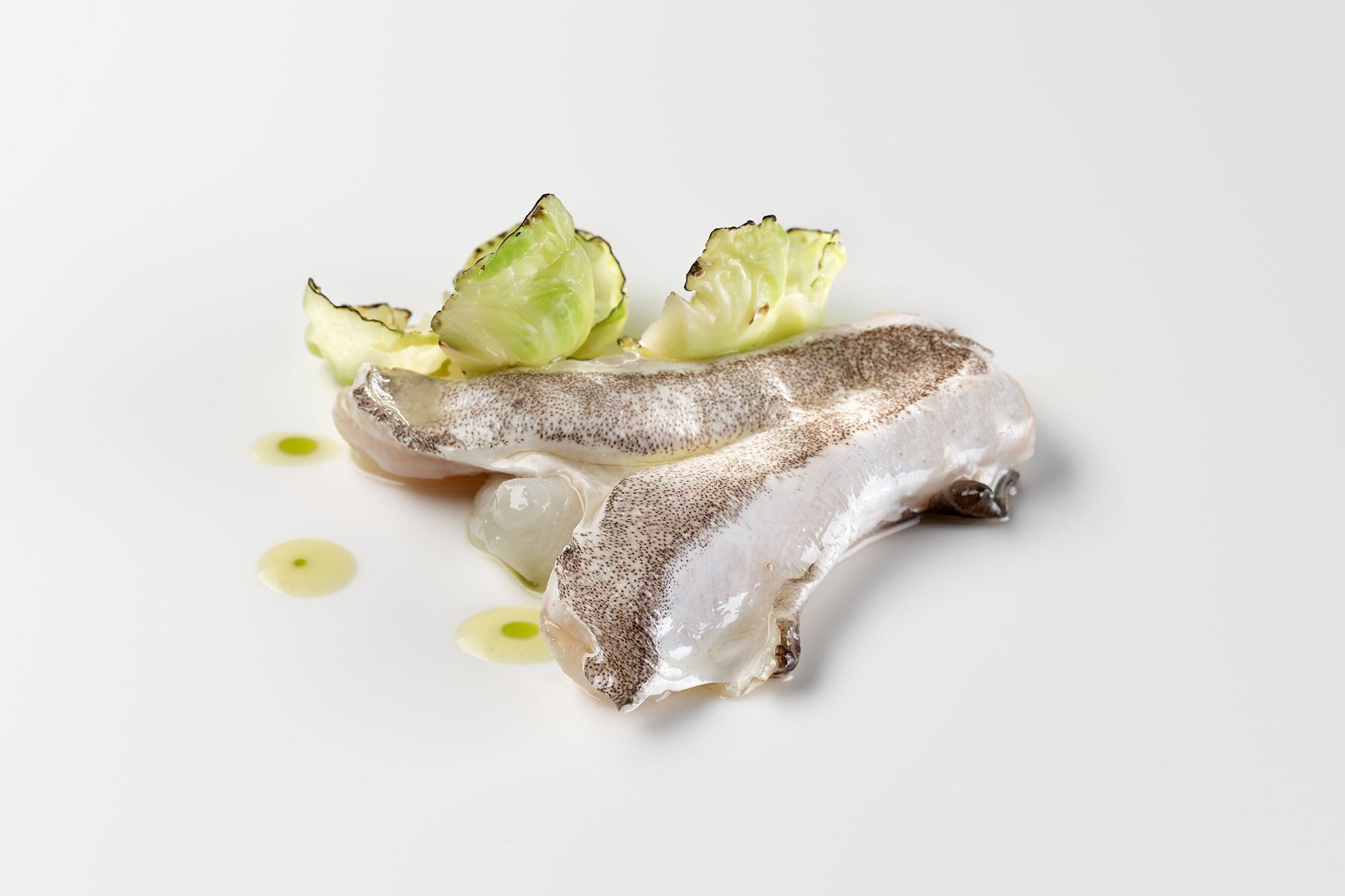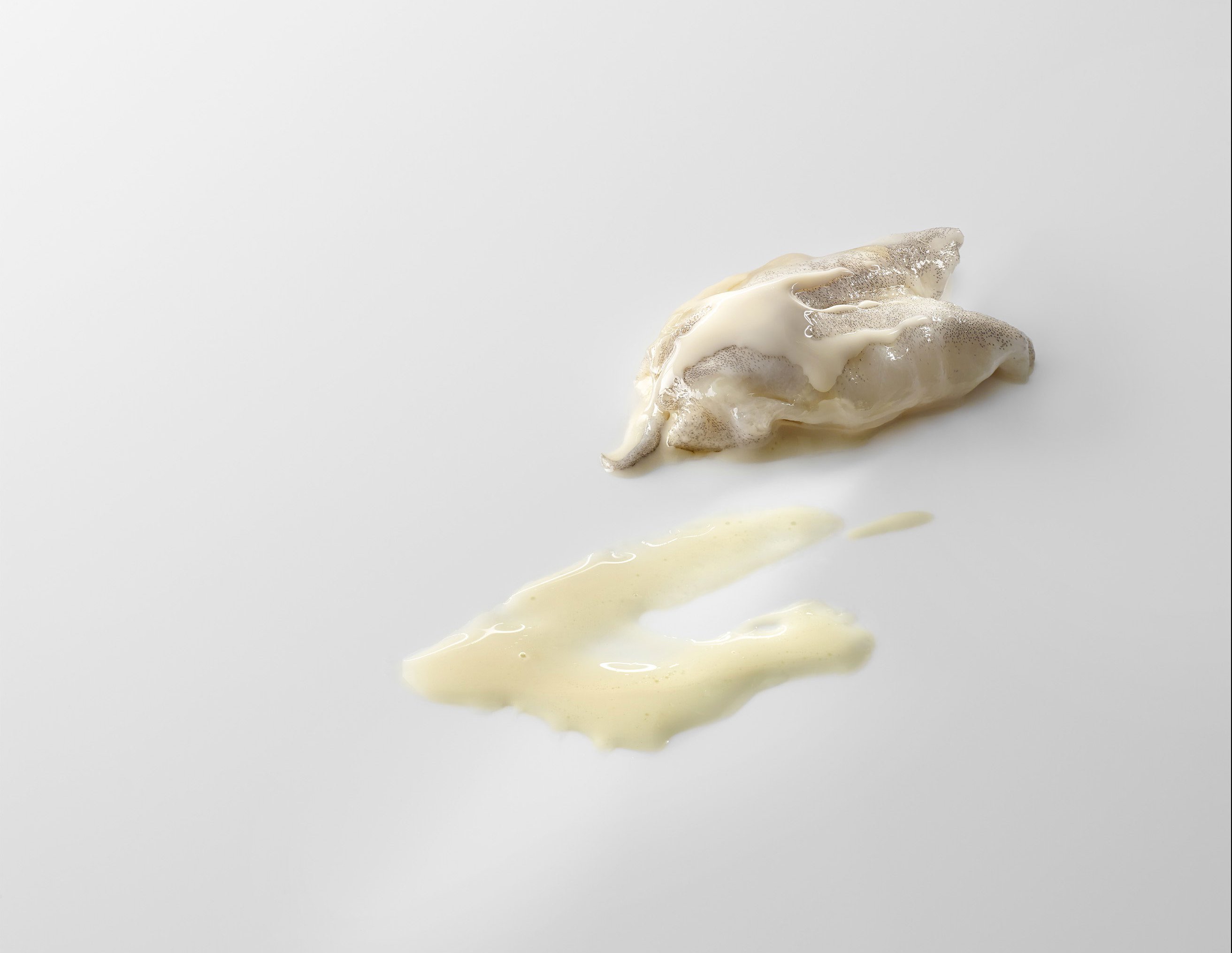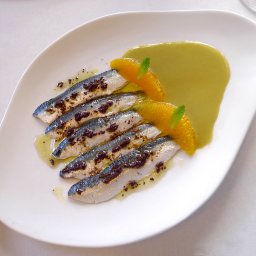Cod and hake kokotxas are considered exclusive ingredients thanks to their high gelatine content. The delicate, heart-shaped morsels of flesh found under the chin of the fish structure are a quintessential part of Basque cuisine.
Kokotxas are a dish in themselves. They are both firm and jelly-like in texture. But what exactly is it about them that makes them so special? Is it how they taste or how they feel? For me, it’s about texture and the familiar taste of fond memories and Basque culture.
Hake
Our hake kokotxas, brussels sprouts and green sauce is a take on the traditional ‘merluza en salsa verde’. The flavour of the fish, in this case fumet, and the acidity of Txakoli are the dominant notes in our dish. The original Txakoli wines were quite green-tasting and very acidic so, to recreate this, we have used piparra peppers and the natural juice of the hake to make a green, astringent-tasting emulsion. But the gelatinous consistency of kokotxas is the key to this dish.
Some other interesting ways of preparing kokotxas include confit cooking, grilling on charcoal and cooking them in a pil-pil sauce. They can also be coated in batter and fried as long as the temperature of the oil never exceeds 65 degrees Centigrade. Many of our dishes are based on these techniques.

Salt cod
Cod kokotxas differ from hake kokotxas in that they have been cured in salt, a process that transforms them considerably. Cod kokotxas are fibrous and have a high collagen content which determines how we need to handle it and which techniques to use. If you boil them, they become tough, so the cooking temperature should never go over 62ºC. Cooking at a low temperature helps the collagen to melt and stops the fibres from contracting.
Another way to cook them is to scald them in a hot sauce, then take them off the heat and allow them to cook in the residual heat. They can also be fried but it takes an experienced chef to achieve the desired mellow texture and bring out the best in them. Cod kokotxas are the most difficult to handle.
We serve salt-cod kokotxas with a reinterpretation of the traditional pil-pil sauce. It’s always pleasing to revisit flavours that evoke fond memories. We’ve taken the traditional Basque recipe to new heights. We use the gelatine from the kokotxas to thicken the pil-pil sauce and achieve the characteristic consistency of the traditional pil-pil sauce. We make a brandade with the flesh of the kokotxa and use kuzu instead of potato for texture. The kokotxa and sauce form a melting mouthful with a lasting taste that evokes fond memories of the past.

On salt
Here’s a tip for people who like cooking kokotxas in a sauce. Kokotxas are impermeable so if you try testing your dish for salt by biting into one, you’ll probably end up over-salting the dish.
The flavour of kokotxas is quite neutral, their main attraction is their texture. The only effective way of seasoning them is by brining them, so bear this in mind.
By Josean Alija
www.neruaguggenheimbilbao.com














